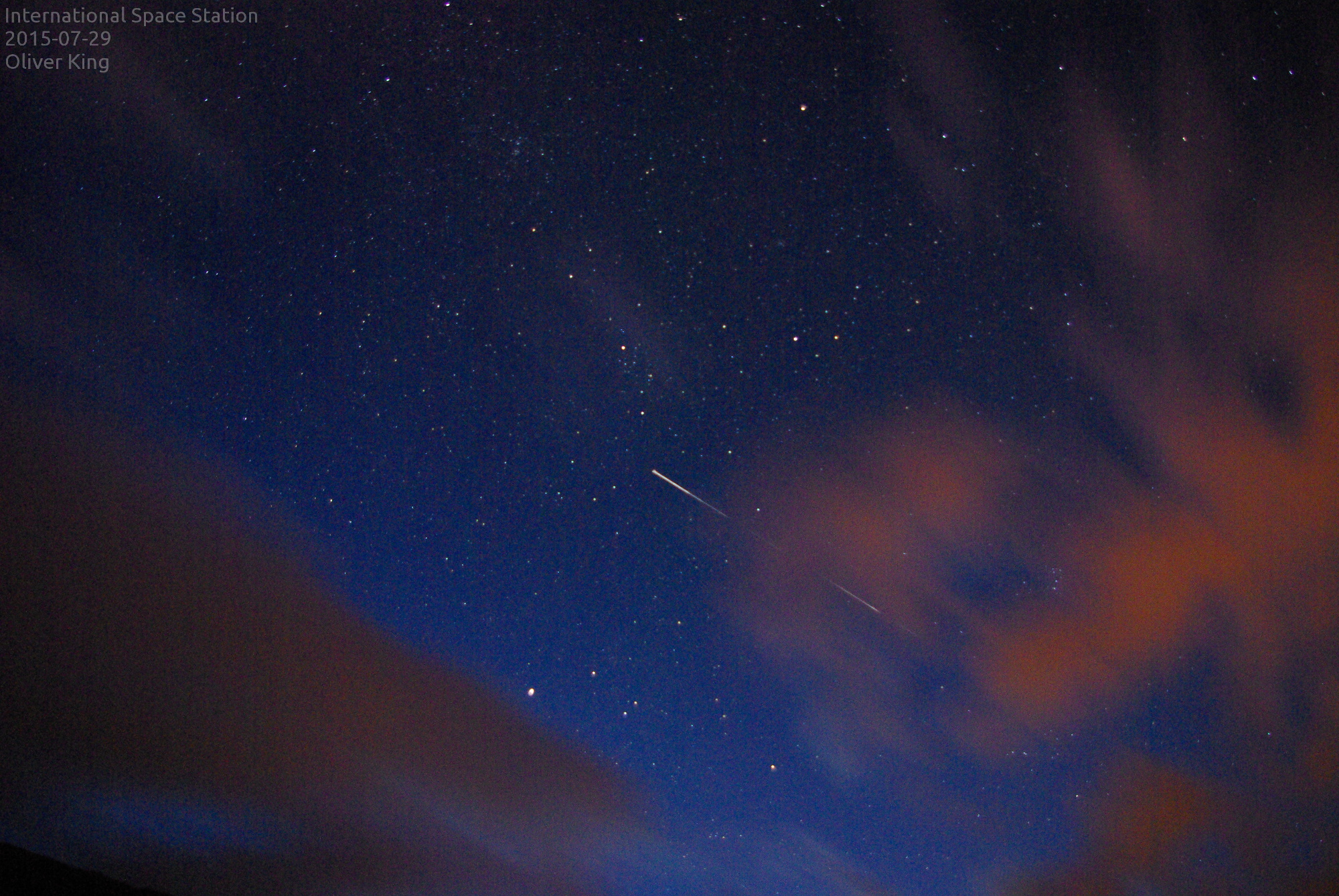July 2015 Skynotes: International Space Station
29th July 2015
The International Space Station (ISS) is a space station orbiting the Earth which has been continuously manned since November 2001. Due to its large size, the space station is the third brightest object in the night sky (after the Sun and the Moon), and is therefore easily visible when it passes overhead at night. Due to variations in the station’s orbit to counter atmospheric drag and avoid space debris, these passes can only be accurately predicted about a month in advance.
This image is a 30 second exposure of the ISS, showing its movement across the sky. The brightness of the space station’s trail in comparison to the background stars shows how bright the reflected sunlight from the space station is. The clouds in this image, tinted red by light from the nearby village, have a streaky appearance due to their movement over the duration of the exposure. Also visible in the image are the mountains surrounding the valley, helping to create the dark skies necessary for the detailed starry sky in the background to be seen.
The other images below are other 30 second exposures taken during the same 6 minute pass of the ISS. The curve on the left of the first image below is caused by the camera wobbling on the tripod at the start of the exposure. The sky is noticeably brighter in the last few images, as they are looking east towards the first hints of sunrise. The Pleiades star cluster is visible in the last image, as a group of stars in the centre left of the image.
Oliver King



Click images for larger versions
Location: Monêtier-les-Bains, French Alps (44°58′37″N 6°30′34″E)
Altitude: 1500m
Date: 2015-07-29, 04:43-04:50 CEST (UTC+02:00)
Camera: Pentax K10D SLR with tripod (f/3.5, ISO-1600)
Exposure: 30 seconds
You can sign up for alerts for ISS passes here


